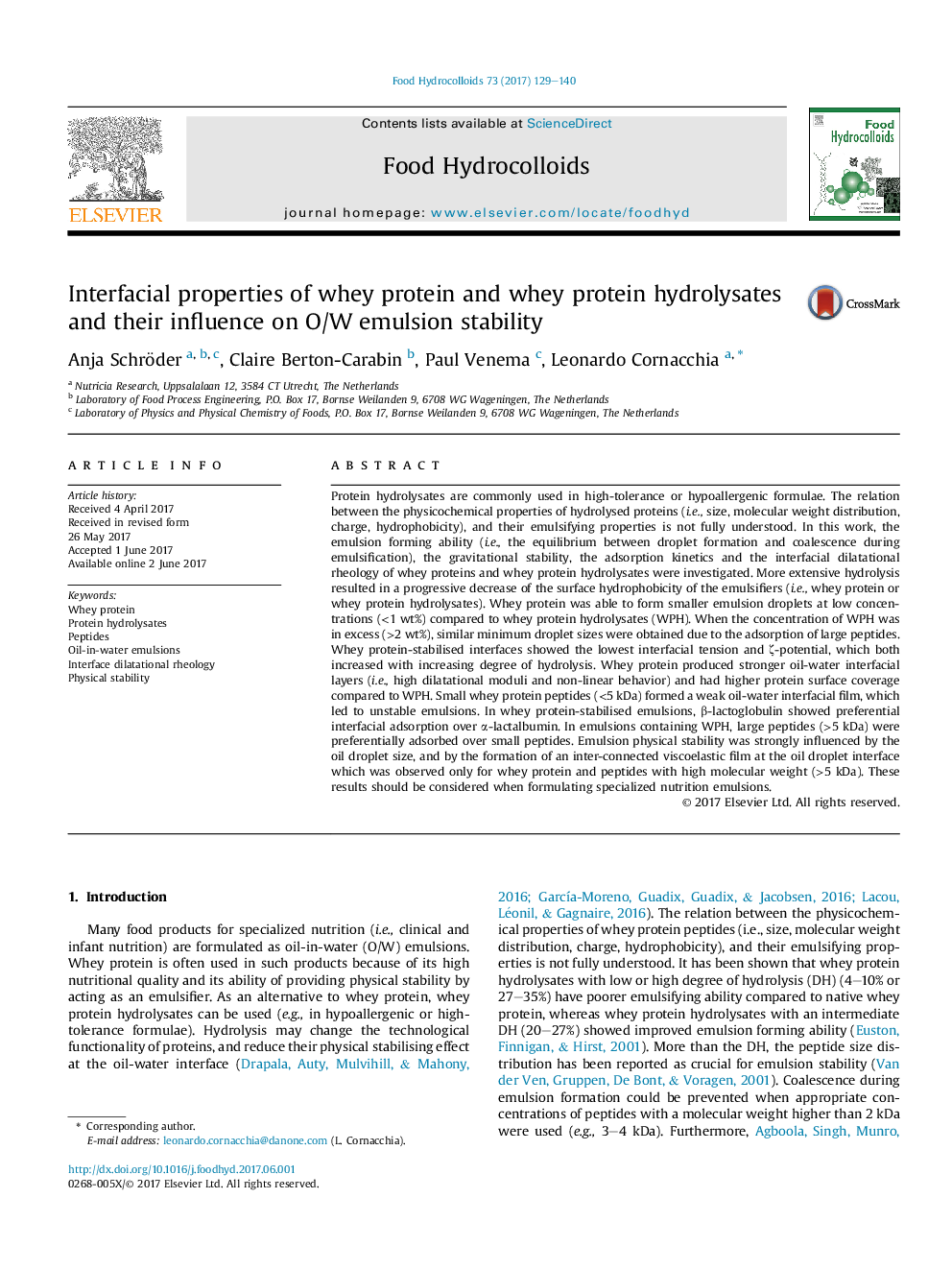| کد مقاله | کد نشریه | سال انتشار | مقاله انگلیسی | نسخه تمام متن |
|---|---|---|---|---|
| 4983818 | 1454404 | 2017 | 12 صفحه PDF | دانلود رایگان |

- Protein/peptide hydrophobicity decreases with decreasing peptide size.
- Whey proteins form a thick, connected, elastic interfacial film.
- Large peptides (>5Â kDa) show preferential adsorption over smaller peptides.
- Small peptides (<5Â kDa) form a weak interfacial film and instable emulsions.
- Peptide size and hydrophobicity are important in emulsion physical stability.
Protein hydrolysates are commonly used in high-tolerance or hypoallergenic formulae. The relation between the physicochemical properties of hydrolysed proteins (i.e., size, molecular weight distribution, charge, hydrophobicity), and their emulsifying properties is not fully understood. In this work, the emulsion forming ability (i.e., the equilibrium between droplet formation and coalescence during emulsification), the gravitational stability, the adsorption kinetics and the interfacial dilatational rheology of whey proteins and whey protein hydrolysates were investigated. More extensive hydrolysis resulted in a progressive decrease of the surface hydrophobicity of the emulsifiers (i.e., whey protein or whey protein hydrolysates). Whey protein was able to form smaller emulsion droplets at low concentrations (<1 wt%) compared to whey protein hydrolysates (WPH). When the concentration of WPH was in excess (>2 wt%), similar minimum droplet sizes were obtained due to the adsorption of large peptides. Whey protein-stabilised interfaces showed the lowest interfacial tension and ζ-potential, which both increased with increasing degree of hydrolysis. Whey protein produced stronger oil-water interfacial layers (i.e., high dilatational moduli and non-linear behavior) and had higher protein surface coverage compared to WPH. Small whey protein peptides (<5 kDa) formed a weak oil-water interfacial film, which led to unstable emulsions. In whey protein-stabilised emulsions, β-lactoglobulin showed preferential interfacial adsorption over α-lactalbumin. In emulsions containing WPH, large peptides (>5 kDa) were preferentially adsorbed over small peptides. Emulsion physical stability was strongly influenced by the oil droplet size, and by the formation of an inter-connected viscoelastic film at the oil droplet interface which was observed only for whey protein and peptides with high molecular weight (>5 kDa). These results should be considered when formulating specialized nutrition emulsions.
271
Journal: Food Hydrocolloids - Volume 73, December 2017, Pages 129-140